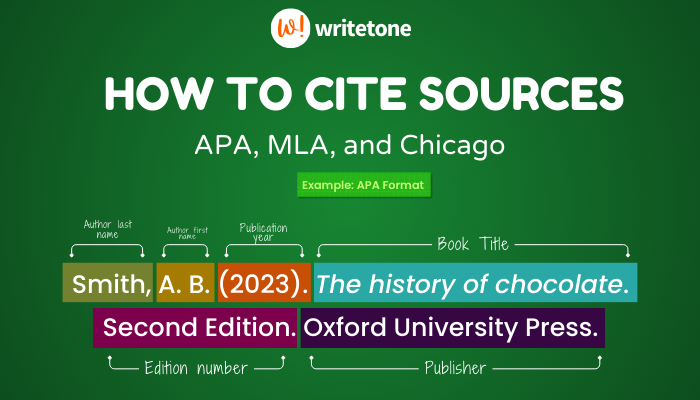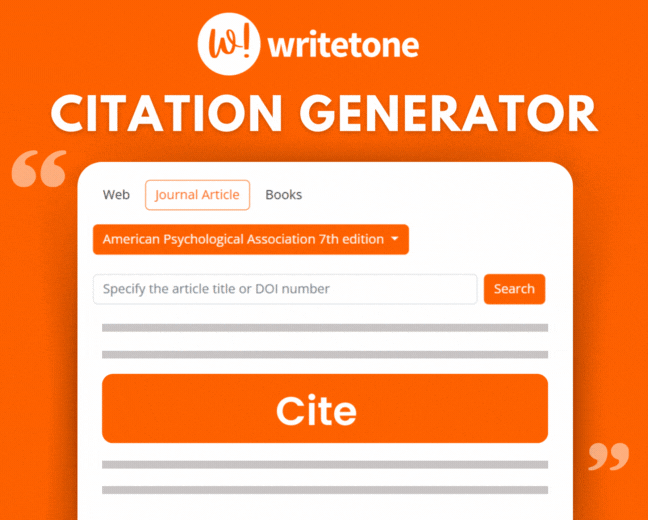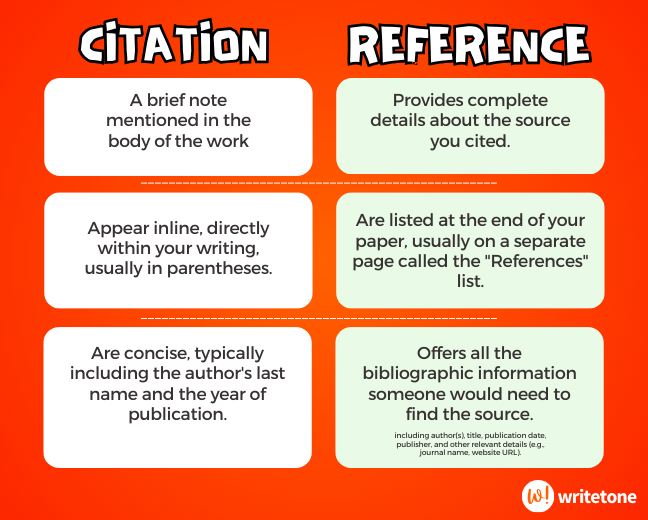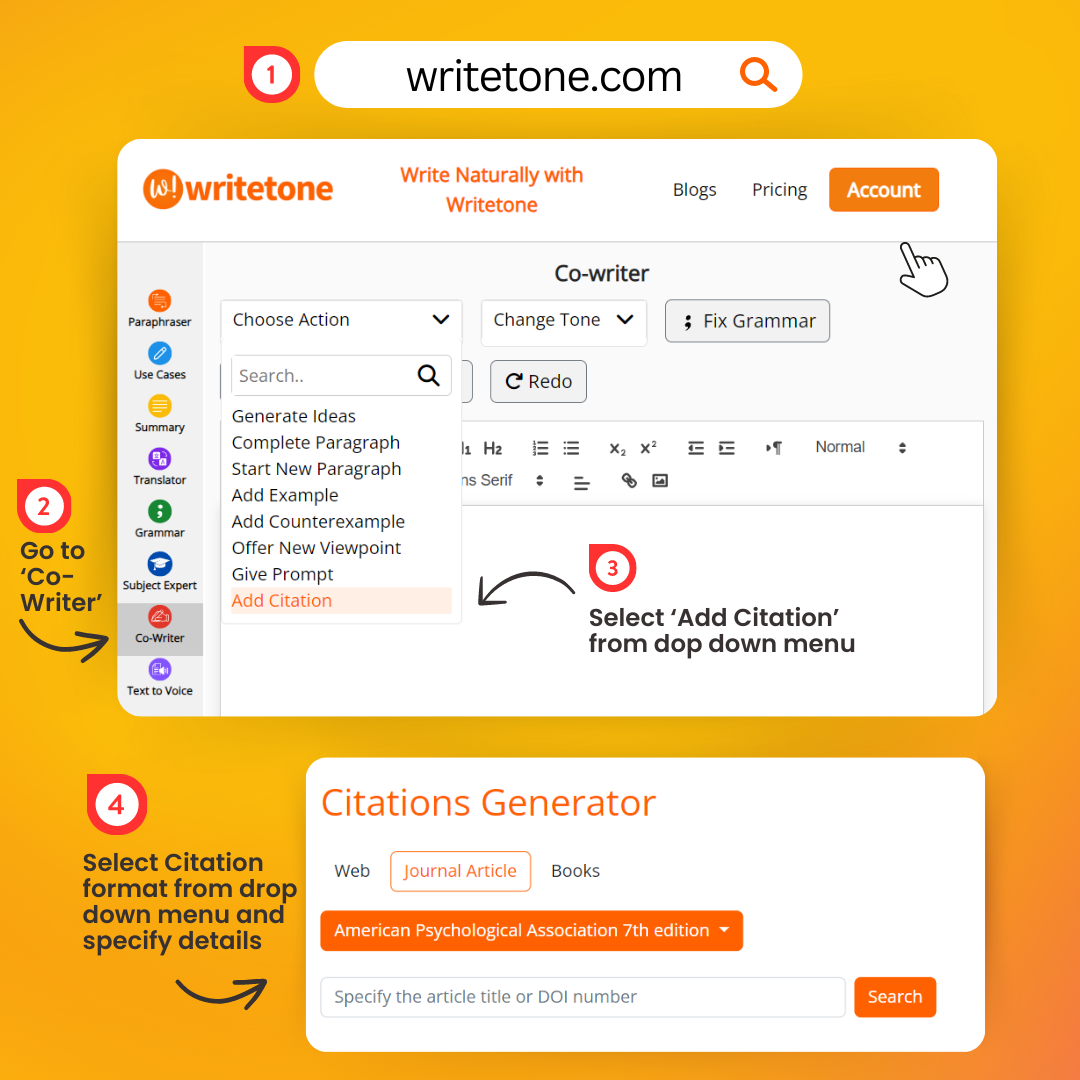How to Cite Sources - APA, MLA, and Chicago: Your Ultimate Guide

Have you ever started a research project only to get overwhelmed by the tedious task of citing your sources? Don't worry, fellow student! Citations are an important part of academic writing, but the different styles of APA, MLA, and Chicago can be confusing.
What is a Citation?
A citation is a formal way of acknowledging the sources you've used in your academic work. It tells your reader where you found the information and allows them to trace your claims back to the original source. It consists of two parts:
In-text citation:
A brief reference within the body of your text that points to the source you're using.
Reference list (APA) / Works Cited list (MLA) / Bibliography (Chicago):
A comprehensive list at the end of your paper that provides full details of all the sources you've cited.
| Get your citations instantly!

Why Are Citations Important?
Citations are more than just a formality - they serve several crucial purposes:
Avoid Plagiarism:
Unintentional or intentional plagiarism – using someone else's work without proper credit – is a serious academic offense. Citations prevent this by clearly showing which ideas are yours and which belong to others.
Credibility:
Proper citations give your work credibility. When you show that you're familiar with the existing research, you establish yourself as a knowledgeable and reliable writer.
Traceability:
Citations allow readers to track down the sources you've used and delve deeper into the subject matter if they choose.
Citation Formats and Examples of Citation Styles
Citation and reference are two sides of the same coin in academic writing, but they serve different purposes and appear in different places. Here's the breakdown.

Citation
is a short way of saying where you got information or ideas in your writing. It's like a signpost that points to the source material. Citations usually include the author's last name and the year of publication (e.g., Smith, 2023).
Reference
is the full bibliographic information about the source you cited. It's like the detailed address that corresponds to the in-text signpost. The reference list, which contains all your references, is usually placed at the end of your paper. It provides all the details needed for someone to find the original source, including author(s), title, publication date, publisher, and other relevant information (e.g., journal title, website URL).
The world of citations can appear complex, with different styles used in various academic fields. Here's a breakdown of the three most common styles and how to cite sources in each:
How to Cite in APA
APA stands for American Psychological Association. It is most often used in Psychology, Education, Business, Engineering, and some sciences. APA style uses an in-text citation system, which means that you include the author's last name and the publication year in the text of your paper. You then provide a full citation for the source in a reference list at the end of your paper.
In-text citations
In-text citations should include the author's last name and the publication year and should be placed within parentheses immediately after the information you are citing.
A recent study found that social media use can lead to feelings of isolation (Smith & Jones, 2023).
Reference list
The reference list should be a list of all the sources you cited in your paper. It should be double-spaced and organized alphabetically by the author's last name. Each entry should include all the necessary details to identify the source, including:
• Author's last name, first initials.
• Publication year.
• Title of the source (italicized for books and reports, bolded for journals).
• Subtitle of the source (if applicable, italicized).
• Journal title (italicized, followed by a comma and volume number in parentheses).
• Issue number (if applicable, in parentheses after the volume number).
• Page numbers (start and end page, separated by a hyphen).
An example of a reference list entry:
Smith, A., & Jones, B. (2023). The impact of social media on mental well-being in young adults. Journal of Technology and Psychology, 12(3),245-260.
Here's a breakdown of the formatting:
| Author names | Smith, A., & Jones, B. |
| Publication year | 2023 |
| Title of the article | The impact of social media on mental well-being in young adults. |
| Journal title | Journal of Technology and Psychology |
| Volume number | 12 |
| Issue number | (3) |
| Page numbers | 245-260 |
Pro Tip: Writetone's Citation Generator can be your lifesaver!
Simply enter the source information (book, article, website, etc.) and Writetone will generate a properly formatted citation in APA, MLA, Chicago style and many others.
| Cite your sources in APA format now.
How to Cite in MLA
MLA format is a style of citing sources that is commonly used in the humanities, such as history, language, literature, and philosophy. It is based on the Modern Language Association's MLA Handbook. MLA began as a style for citing sources in literature and language, but it has since been adopted by other humanities disciplines. Full citations in MLA format are always listed on a Works Cited page.
| Cite your sources in MLA format now.
In-text citations
The preferred placement for in-text citations is at the end of a sentence. When citing a text, the format is (author’s last name and page number) or (Smith 123). If the author's last name is already used in your sentence, then you may just cite the page number from which the quote or information was taken, like:
No punctuation should exist inside the parentheses, and the parentheses should always come before the sentence's final punctuation mark, but after the quotation marks, for direct quotes.
Works Cited or Full MLA Citations
MLA Works Cited entries have a specific format, but it's easy to follow. Here's how to write a full MLA citation:
Author. Title of source. Title of the Container, Other contributors, Version, Number, Publisher, Publication date, Location.
The container is where the source comes from, like an anthology, newspaper, or magazine. Not every part of the format is used every time. For example, standalone works don't have a container separate from their title. If you only have the author, title, and publication year, that's enough. But the more information you can add, the better.
Example
Garcia, Rodriguez, and Martinez. "The Positive Effects of Online Communities." Journal of Technology and Society, vol. 17, no. 2, 2022, pp. 78-92.
Explanation:
| Authors: | Garcia, Rodriguez, and Martinez |
| Title of the Source: | "The Positive Effects of Online Communities" |
| Title of Container: | Journal of Technology and Society |
| Volume number: | vol. 17 |
| Issue number: | 2 |
| Publication year: | 2022 |
| Page numbers: | pp. 78-92 |
How Writetone's Citation Generator Can Help:
Save Time:
Manually formatting citations can be tedious. Writetone's Citation Generator allows you to input the source information (e.g., author, title, URL), and it will automatically generate the citation in the desired style.
Reduce Errors:
Manually formatting citations can lead to errors. The Citation Generator ensures your citations are formatted correctly according to the chosen style guide.
Multiple Styles Supported:
With support for over 100 citation formats, Writetone adapts to your specific assignment needs.

How to Cite Chicago Style
The Chicago Manual of Style (CMS) is a third commonly used citation style. Chicago style citations are often used in the fields of Fine Arts, Anthropology, and select other sciences and humanities.
CMS style uses a footnote or endnote system, which means that you include footnotes at the bottom of the page or endnotes at the end of your paper. Both footnotes and endnotes provide the full citation for the source you're referencing.
The final list at the end is called a Bibliography, which includes all the sources you cited, regardless of whether they were mentioned in footnotes/endnotes.
| Cite your sources in Chicago style now.
In-text Citations
Instead of using parentheses, Chicago in-text citations use superscript numbers placed after punctuation marks (commas, periods, semicolons). These numbers correspond to numbered footnotes or endnotes placed at the bottom of the page (footnotes) or the end of your paper (endnotes).
Example
According to a recent study, social media use can have negative effects on mental health.¹
¹ John Smith,The Upward Spiral: Using Social Media to Promote Well-Being (Chicago: University Press, 2023), 123.
• In the first sentence, the superscript ‘ ¹ ’ indicates a source is being cited.
• At the bottom of the page (or end of the paper), a footnote or endnote with the corresponding number (‘ ¹ ’) provides the full citation details.
• The footnote includes the author's name, title of the source (italicized for books), publisher, city of publication, and year.
• Finally, "123" indicates the specific page number within the book where the information you're referencing is located.
The first in-text citation for a source uses the full footnote format. Subsequent citations to the same source can use a shortened form, including the author's last name and a shortened title (e.g., Smith, Upward Spiral, 125).
Bibliographical Citations
As mentioned earlier, Chicago style uses a bibliography instead of a Works Cited list. Here's how to format bibliography entries:
Formatting
• The bibliography starts on a new page after your paper's conclusion.
• Entries are double-spaced.
• The first line of each entry is flush left, while subsequent lines are indented (hanging indent).
• Entries are alphabetized by the author's last name (or the first word of the title for non-author sources).
Smith, John. The Upward Spiral: Using Social Media to Promote Well-Being. Chicago: University Press, 2023.
Explanation:
| Authors: | Smith, John |
| Title of the Source: | The Upward Spiral: Using Social Media to Promote Well-Being |
| Place of publication: | Chicago |
| Publisher: | University Press |
| Publication date | 2023 |
• Book by two or more authors: List authors in the order they appear in the source, separated by commas and "and" before the last author. (e.g., Jones, Michael, and Sarah Miller.)
• Article in a journal: Include the author(s), article title in quotation marks, journal title italicized, volume number, issue number (if applicable), publication year, and page numbers.
Garcia, Rodriguez, "The Positive Effects of Online Communities," Journal of Technology and Society 17, no. 2 (2022): 78-92.
• Website: Include the author/organization (if available), title of the webpage in quotation marks, website title italicized (if applicable), URL in square brackets, and access date.
ExampleKhan Academy. "Photosynthesis." Khan Academy, [https://khanacademywebsitelink.com], accessed March 15, 2024.
| Try free citation generator now.
Conclusion
In conclusion, citing your sources is an essential part of academic writing. It shows that you have done your research and that you are giving credit to the authors of the work you have used. There are three main citation styles: APA, MLA, and Chicago. Each style has its own set of rules, so it is important to choose the style that is required for your assignment. By following the guidelines for your chosen style, you can create accurate and consistent citations that will help you to avoid plagiarism.
Here are some additional tips for citing sources:Always cite your sources, even if you are only paraphrasing or summarizing someone else's work. Plagiarism is a serious academic offense, and it can have serious consequences.
Be sure to include all of the necessary information in your citations. This includes the author's name, the title of the work, the publication date, and the page number(s).
Check your citations carefully before you submit your paper. Make sure that you have formatted them correctly and that they are all complete.
By following these tips, you can create accurate and consistent citations that will help you to avoid plagiarism and to earn a good grade on your assignment.